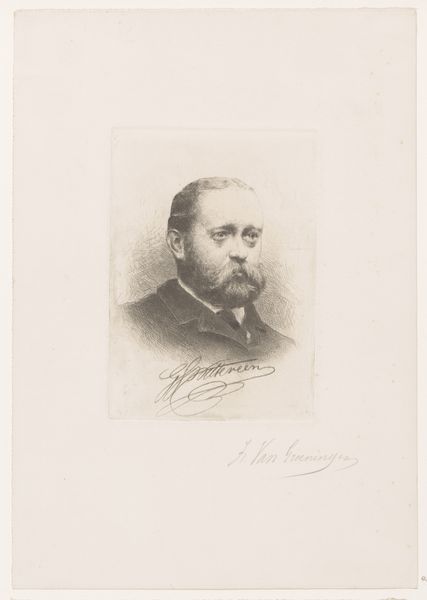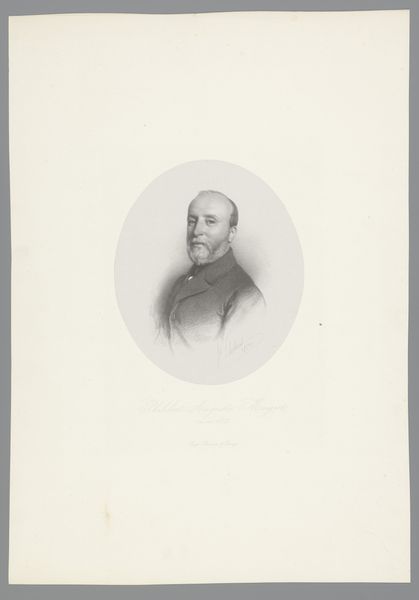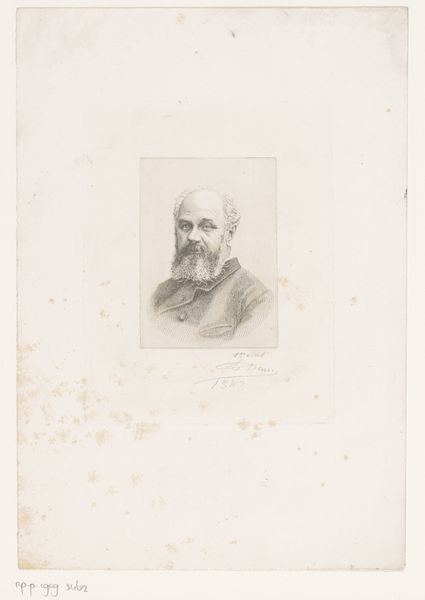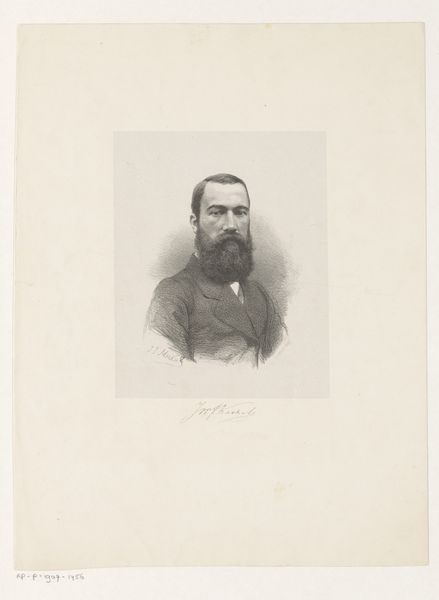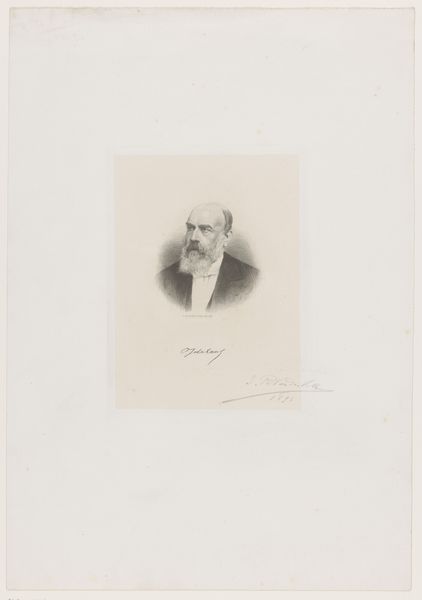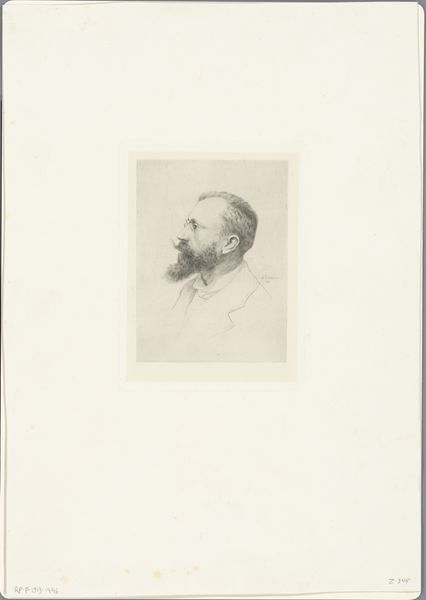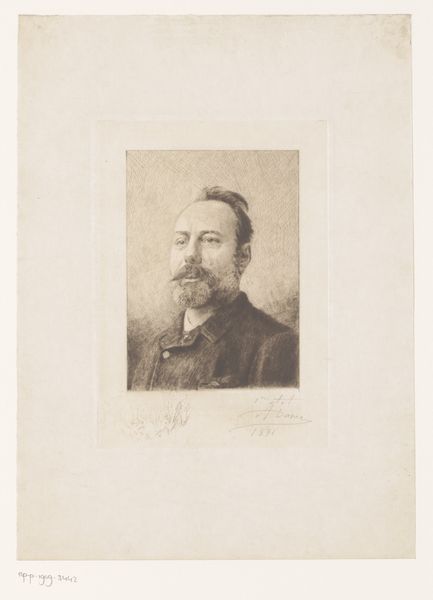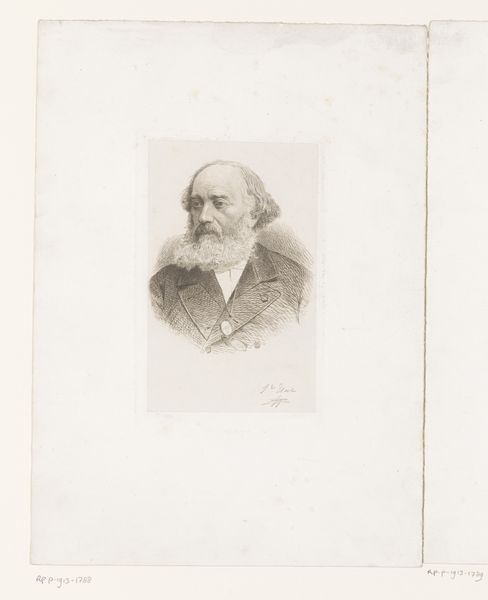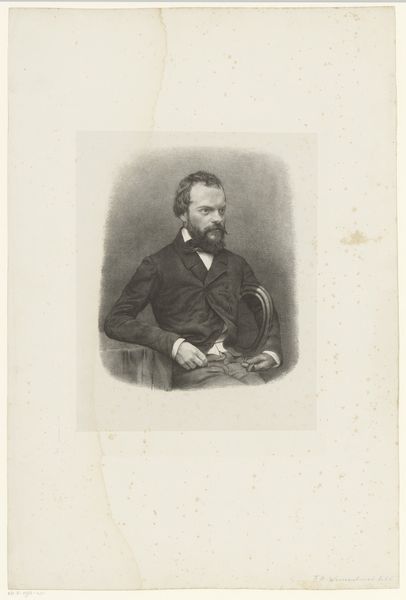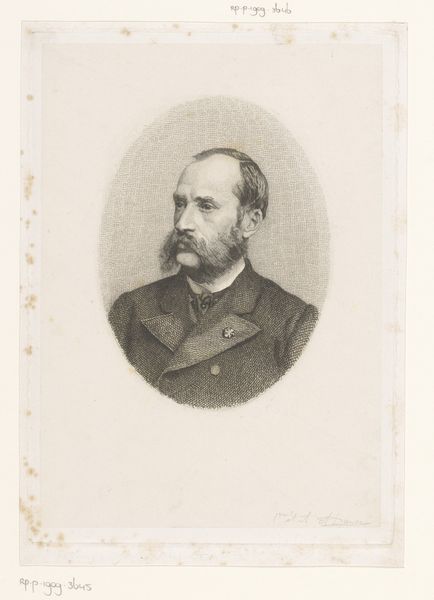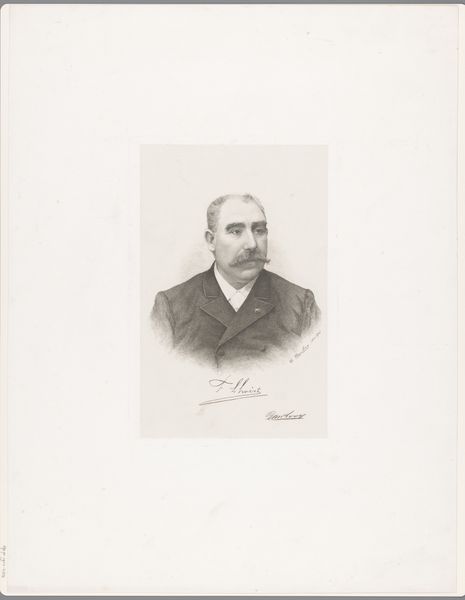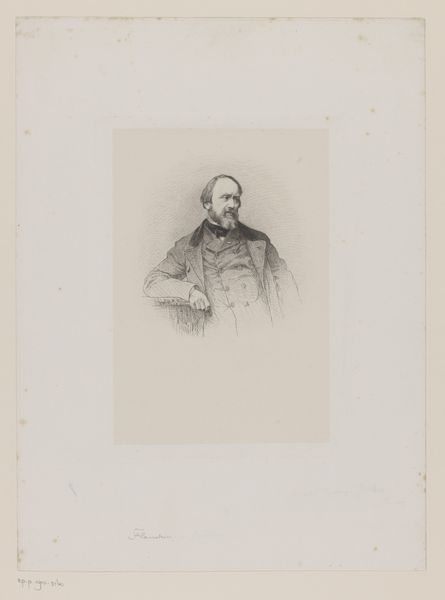
drawing, graphite
#
portrait
#
pencil drawn
#
drawing
#
light pencil work
#
old engraving style
#
graphite
#
tonal art
#
academic-art
#
realism
Dimensions: height 161 mm, width 118 mm
Copyright: Rijks Museum: Open Domain
Curator: Here we have a graphite drawing titled “Portret van Charles Verlat,” created sometime between 1864 and 1911 by Frans Lauwers. Editor: My initial impression is one of reserved confidence. The subject's pose, with arms crossed, speaks volumes. Curator: Indeed. Note the strategic use of line weight. Lauwers masterfully employs light pencil work to capture the subtle contours of Verlat’s face, while darker strokes define the beard and jacket, lending a sense of depth and solidity to the overall composition. The contrast creates an appealing tonal quality. Editor: Absolutely. The crossed arms—a historically resonant symbol of authority and self-assurance—coupled with his direct gaze, constructs him as a pillar of strength. What can we infer about his status and impact during that era? Curator: Such symbolism in portraiture adheres to academic conventions, embedding meaning and character through coded gesture. In line with the realism style, the natural rendering emphasizes his physical presence, with the graphite highlighting his texture. Editor: This contrasts with the airiness of the background. It allows the viewer to truly appreciate Verlat’s physical attributes. It amplifies a feeling of the past preserved – like a memory emerging from the silence of the paper. His identity lives on within this depiction. Curator: It truly speaks to the timelessness inherent in the art of portraiture. The strategic formal structure guides the gaze across Lauwers’ calculated image-making. Editor: Lauwers’ art skillfully taps into an established visual language to speak not only about a particular man, but to represent the values and beliefs of his epoch. I believe his representation creates meaning by evoking cultural history. Curator: The beauty resides not just in representation, but also in the artistic strategy: line, tone, and form employed towards a cohesive aesthetic outcome. It showcases the power of composition. Editor: Perhaps it's how these techniques fuse together so convincingly. In many ways, these echoes resonate with our existing views of leadership and lasting visual imagery. Curator: Thank you for pointing this out; seeing the dialogue of signs and structural forms at work certainly adds new perspectives when considering art’s broader impact!
Comments
No comments
Be the first to comment and join the conversation on the ultimate creative platform.
